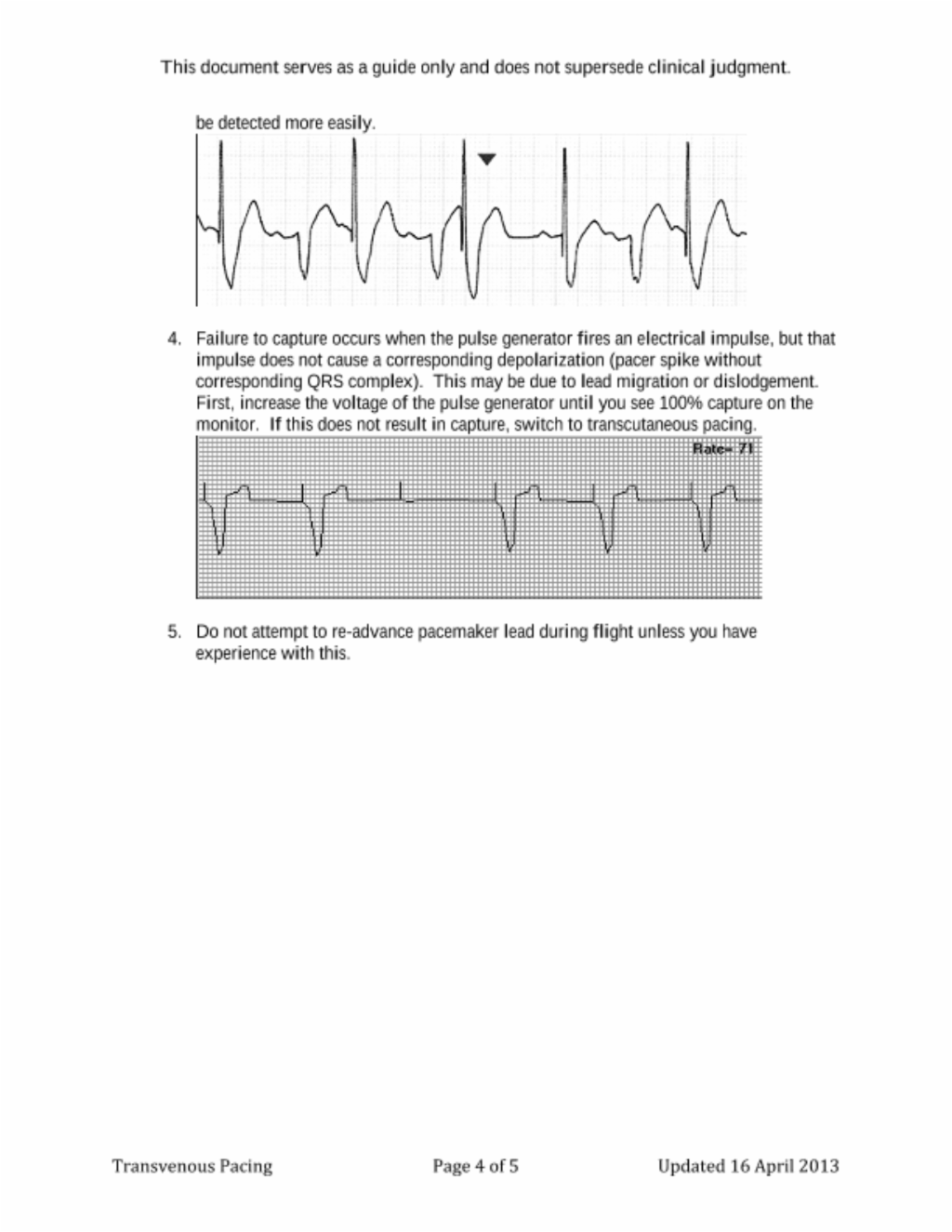CCAT Temporary Transvenous Pacemaker Clinical Practice Guideline - Salma Test
Joint Trauma System

I. Goal. To provide guidance for the management of patients with bradycardia requiring a temporary transvenous pacemaker.
II. Background. A. Severe bradycardia is rare in-theater, but can occur in association with myocardial infarction. Other causes of bradycardia such as drug toxicity, infiltrative disease, collagen vascular disease, cardiac surgery, endocrinologic abnormalities, and autonomic insufficiency are exceedingly rare in theater.
- Many bradycardic episodes are temporary in nature and therefore may not require pacemaker support at all. Discussion with the Theater Cardiology Consultant should be the first step in determining the necessity for pacemaker support.
- Placement of a permanent pacemaker requires specialized personnel and equipment, and may not be possible in-theater. In patients requiring pacemaker support, a temporary transvenous pacemaker may be utilized.
- Temporary transvenous pacemakers may be placed at the bedside and transported with a portable pulse generator.
- When transporting a patient with a temporary pacemaker, familiarity with the basic modes and settings is necessary.
- Transvenous pacemakers may be subject to electromagnetic and mechanical interference during transportation. Special consideration regarding this interference should be taken during transportation of these patients.
III. Evaluation and treatment
A. Indications: Generally, bradycardia resulting in hemodynamic compromise or impending hemodynamic compromise is an indication for pacemaker support. Common rhythms include sinus arrest, second-degree type 2 heart block, and third-degree (complete) heart block.B. History and Physical1. Symptoms for bradycardia may be obvious, with dizziness and/or syncope; or more insidious, with fatigue and decreased energy upon exertion.2. Physical examination should include cardiac auscultation to evaluate for extra cardiac sounds to suggest congestive heart failure (S3), evaluation for cardiac murmurs, auscultation of the lungs and jugular veins, as well as neurologic examination.3. The cause of the above-described symptoms will often become evident on electrocardiogram. A 12-lead ECG with rhythm strip should be obtained.C. Electrocardiogram: Look for sinus arrest or heart block with long (>3 second) pauses or slow (<30 bpm) escape rhythm.
